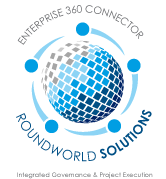Your organization has decided that it is time to take advantage of the massive amounts of data you own. Executive management sees the value of that data and how the proper use of it can impact the bottom line and stakeholders are asking for more and more information to increase efficiencies across your organization.
However, your data is stored on disparate systems, ownership of different aspects of your data is managed by separate business units, and there are concerns about the quality and consistency of your data across those systems and departments.
So now that management, stakeholders, and IT are on board and you recognize the challenges you are facing, your organization is committed to implementing a comprehensive Data Governance plan to ensure compliance, quality, consistency, accessibility, and security of that data.
Now the question becomes:
Where do we start?
The first step is to perform an assessment to establish your baseline state of your processes, strategy, framework, and architecture both for ongoing Projects and the Life Cycle governance of ongoing Operational processes.
The specific elements of that baseline assessment are:
1. Stakeholder Alignment – For a Data Governance plan to truly work, you need buy in and support from all stakeholder levels. Including:
a. C-Level Exeutives
b. Business units that own the data
c. IT Department
d. End-users of the data
With all stakeholders you must collect pertinent information to ensure understanding of the process and enable individual accountability to keep the process on track. It is essential to receive commitment from all stakeholders to the success of the project and to help decide and record the milestones that solidify a successful comprehensive Data Governance plan.
The next step to a successful baseline determination is:
2. A comprehensive gap analysis which includes validating and assessing existing Data Processes, Ownership, Tools & Structures for Anticipation, Data preparation, Data Migration, Hyper care and Life Cycle management.
It includes assessments in the following areas:
a. Current data set
b. Data standards
c. Current policies and procedures
d. Performance metrics
e. Escalation and resolution policies
f. Organizational structure
g. Change management policies and procedures
h. Current tools and technologies
i. Process flows
A detailed analysis document is then prepared with all pertinent information and commitment from stakeholders combined with detailed Gap Analysis information to give your organization a clear picture on your current state of Data Governance. The document establishes the baseline for your organizations comprehensive Data Governance plan.
RoundWorld Solutions is now offering a no cost, no obligation, 2 week assessment to create a detailed stakeholder alignment and gap analysis report for your organization to establish a baseline for your organization’s IT and Business governance needs.
You can find more information on our 2 week assessment
If you would like to discuss the Roundworld Solutions Big Data 360 View Tool, or this article please contact the author Arun Kumar – Vice President, Solutions and Delivery at arunk@roundworldsolutions.com or contact us today.
